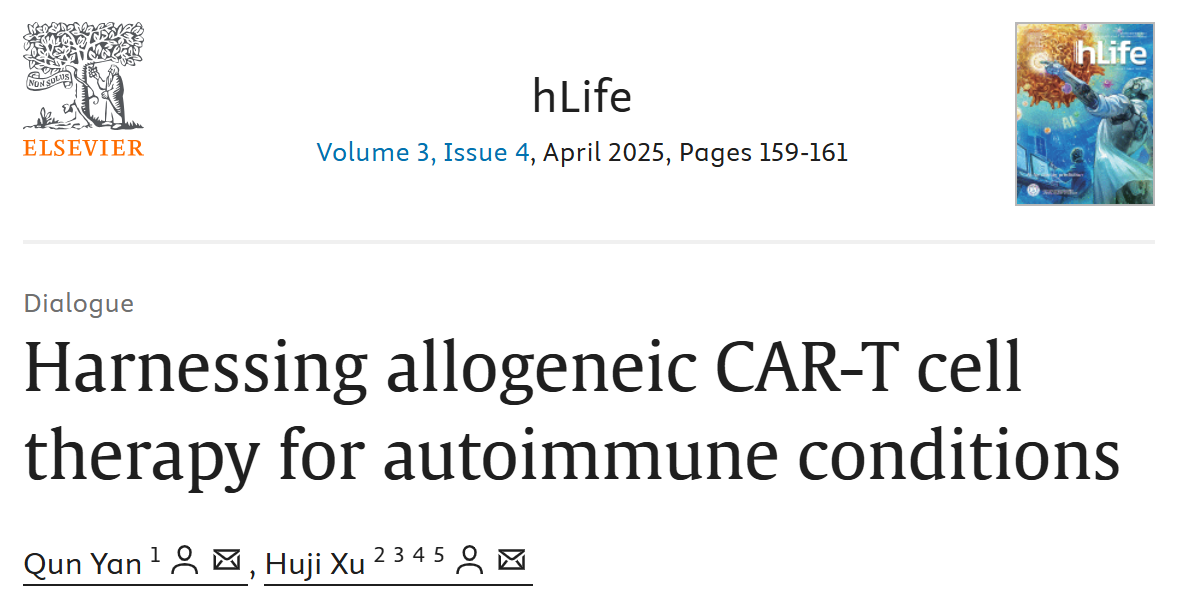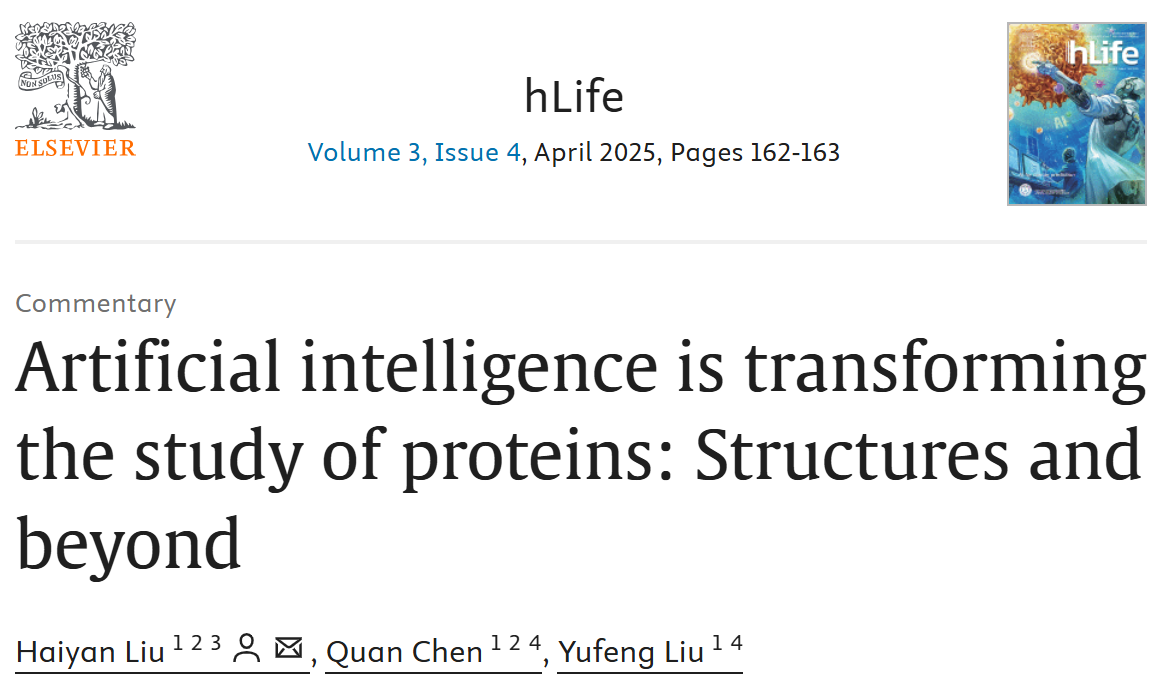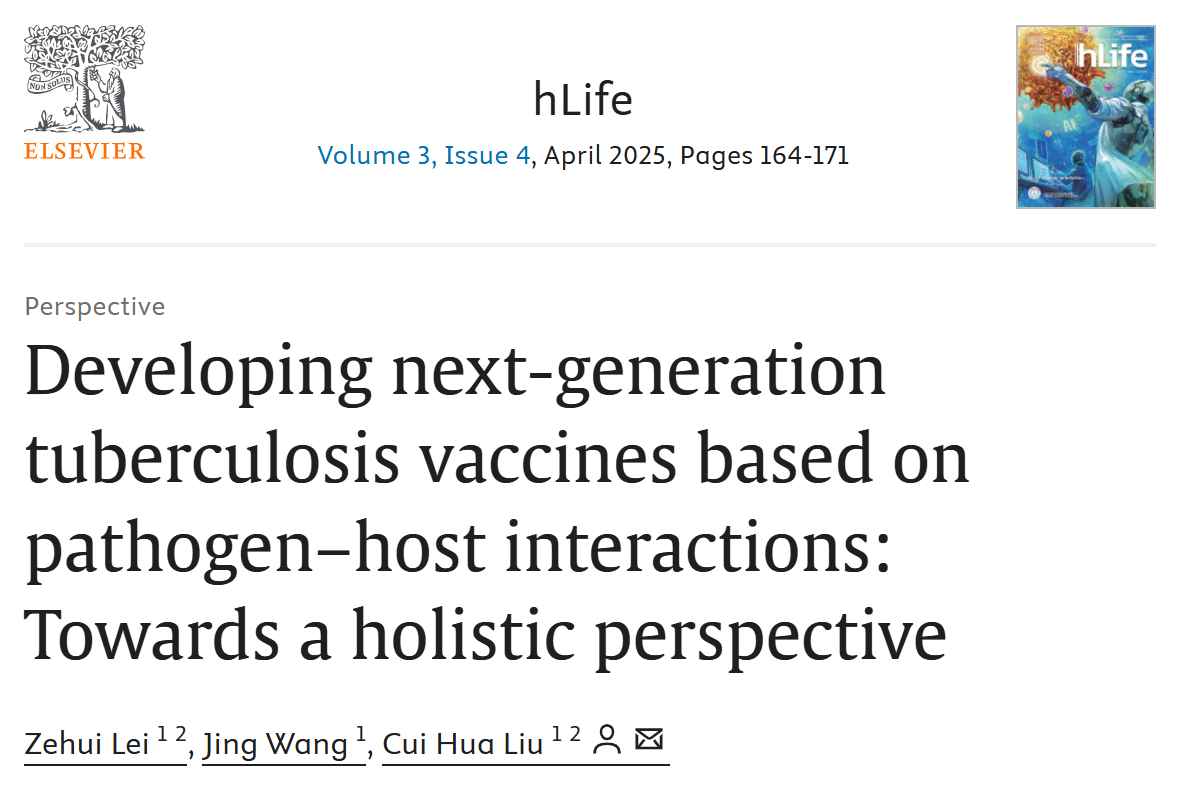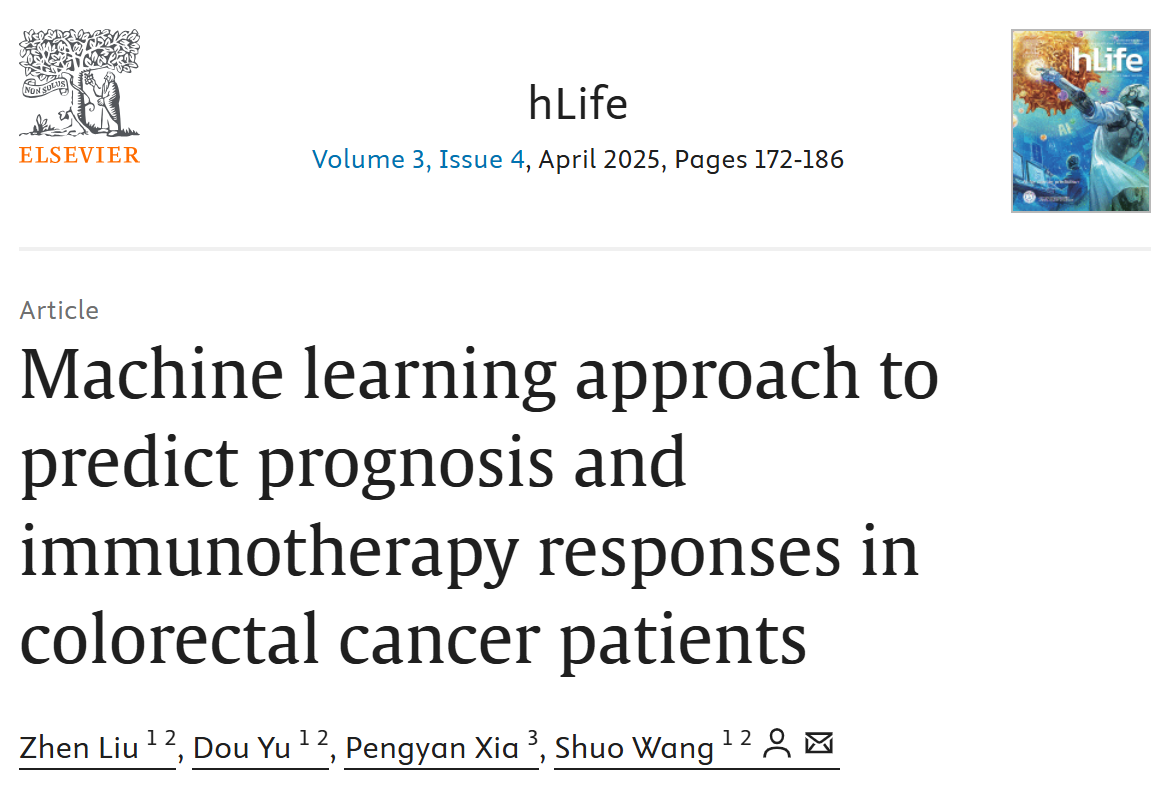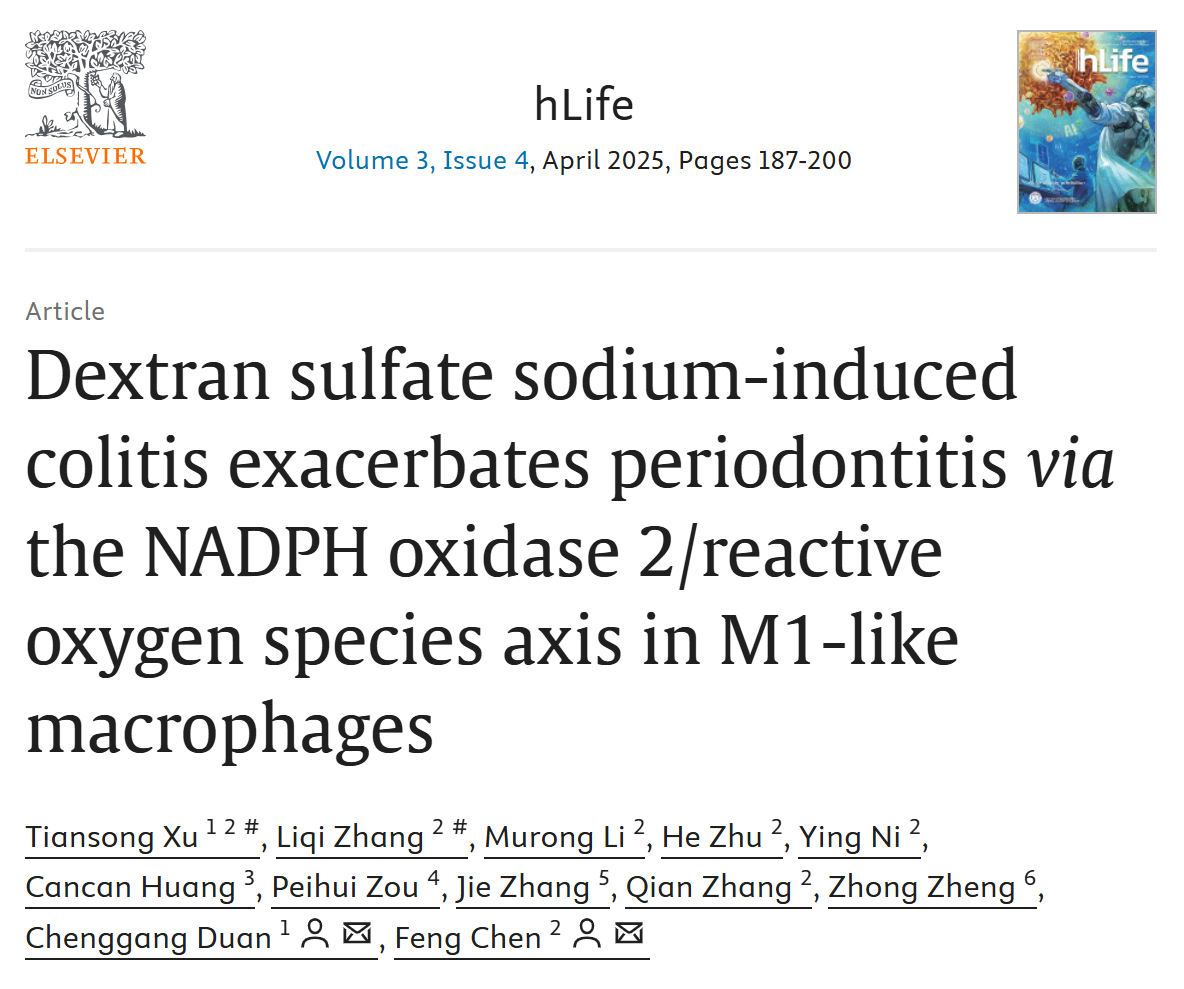博文
[转载]hLife 2025年第四期正式出版
||

✦
✦
✦
封面解读
✦

王硕

刘臻
Colorectal cancer (CRC) is one of the most common malignant tumors in the world with a high mortality rate, and its high heterogeneity and aggressiveness make the prognosis of patients with advanced disease still poor. Although the widely used tumor-nodes-metastasis (TNM) staging system can be used for risk assessment and treatment decision-making, it cannot fully account for the impact of tumor microenvironment (TME) and immune cells on disease progression. Researchers from the Institute of Microbiology, Chinese Academy of Sciences, and Peking University have developed an Immune Response-related Risk Score (IRRS) model by integrating clinical and transcriptomic data using machine learning approaches. Based on 13 core immune-related genes, the model enables effective patient stratification and immunotherapy outcome prediction, outperforming the widely used Tumor Immune Dysfunction and Exclusion (TIDE) tool in predicting immunotherapy response. The cover shows an artificial intelligence bot analyzing data. They analyze clinical data and the tumor immune microenvironment to predict the response to immunotherapy.
✦
导读
✦
✦
All Papers
✦
1. Harnessing allogeneic CAR-T cell therapy for autoimmune conditions
通讯作者:徐沪济,闫群
Chimeric antigen receptor-T (CAR-T) cell therapy has revolutionized cancer treatment, yet its application to autoimmune diseases remains in its infancy. In 2024, Professor Huji Xu and his colleagues achieved a groundbreaking milestone in allogeneic CD19-targeted CAR-T therapy in patients with severe myositis and systemic sclerosis. In this dialogue, Professor Xu elaborated on the rationale and development of allogeneic CAR-T therapy as a cost-effective, scalable alternative to autologous approaches. By utilizing multiplex genome-edited CD19-targeted CAR-T cells derived from healthy donors, his team aims to address critical challenges in manufacturing, accessibility, and long-term efficacy. Professor Xu also discussed strategies for cost reduction, regulatory hurdles, and the broader implications for immunotherapy. Drawing on his extensive experience, he envisions allogeneic CAR-T therapy emerging as a transformative treatment for autoimmune diseases, with the potential to achieve widespread accessibility and profound clinical impact.
引用:
Yan Q, Xu H. Harnessing allogeneic CAR-T cell therapy for autoimmune conditions. hLife 2025; 3: 159–161.
2. Artificial intelligence is transforming the study of proteins: Structures and beyond
通讯作者:刘海燕
The successes of deep learning in the prediction and design of protein structures have been remarkable. However, they may just represent the beginning of a new era in which artificial intelligence (AI) will transform the studies of proteins. Besides folding into unique 3D structures, proteins are also capable of dynamically changing their structures to perform various functions, such as binding specific molecular partners, performing catalysis, or carrying out regulations. We are seeing emerging studies, such as AlphaFold3 and RosettaFoldAA , which move towards modeling protein structures in complex with other molecules including proteins or small molecules. Future innovations may bring within reach the modeling and designing of proteins that harness conformational dynamics for function. The rapid advances of AI approaches in the studies of proteins are opening up a wide range of new applications and opportunities in life science and biotechnology researches.引用:Liu H, Chen Q, Liu Y. Artificial intelligence is transforming the study of proteins: Structures and beyond. hLife 2025; 3: 162–163.
3. Developing next-generation tuberculosis vaccines based on pathogen–host interactions: Towards a holistic perspective
hLife | 着眼整体视角:基于病原-宿主互作研发下一代结核病疫苗
通讯作者:刘翠华
本文系统总结了结核病疫苗研发的困境和挑战,阐述了结核病致病过程中结核分枝杆菌与宿主相互作用的研究进展,并进一步探讨了基于病原-宿主相互作用的新一代高效、低毒、持久的结核病疫苗研发新策略。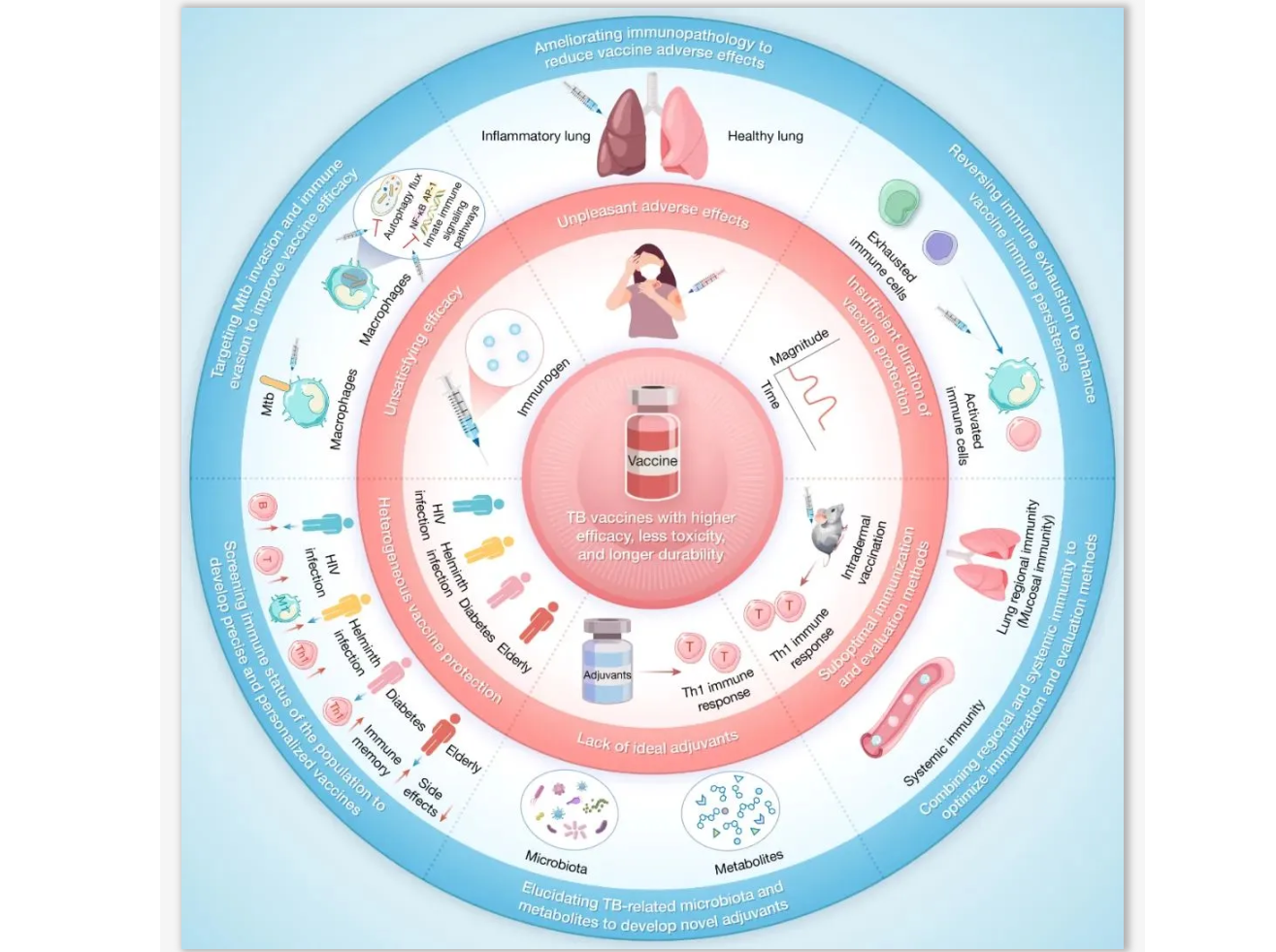 引用:
引用:
Lei Z, Wang J, Liu CH. Developing next-generation tuberculosis vaccines based on pathogen–host interactions: Towards a holistic perspective. hLife 2025; 3: 164–171.
4. Machine learning approach to predict prognosis and immunotherapy responses in colorectal cancer patientshLife | 中国科学院微生物所王硕团队利用人工智能赋能结直肠癌免疫治疗预测通讯作者:王硕
本研究通过机器学习方法构建了一个高效且稳健的结直肠癌风险分层模型IRRS,揭示了肿瘤微环境与患者免疫反应之间的复杂关系。IRRS模型不仅具有较好的预后预测能力,为指导免疫治疗决策提供了依据,也为结直肠癌的基础研究和临床应用提供了潜在的生物标志物和治疗靶点。

引用:
Liu Z, Yu D, Xia P, et al. Machine learning approach to predict prognosis and immunotherapy responses in colorectal cancer patients. hLife 2025; 3: 172–186.
5. Dextran sulfate sodium-induced colitis exacerbates periodontitis via the NADPH oxidase 2/reactive oxygen species axis in M1-like macrophages
hLife | 北大口腔陈峰团队揭示结肠炎加剧牙周炎新机制:NOX2/ROS轴是关键!
本研究为理解牙周炎和IBD之间的相互作用提供了新的分子机制,并为开发新的治疗策略提供了潜在靶点。通过调控NOX2/ROS轴,未来可能能够有效减轻或预防由结肠炎加剧的牙周炎,从而改善患者的生活质量。
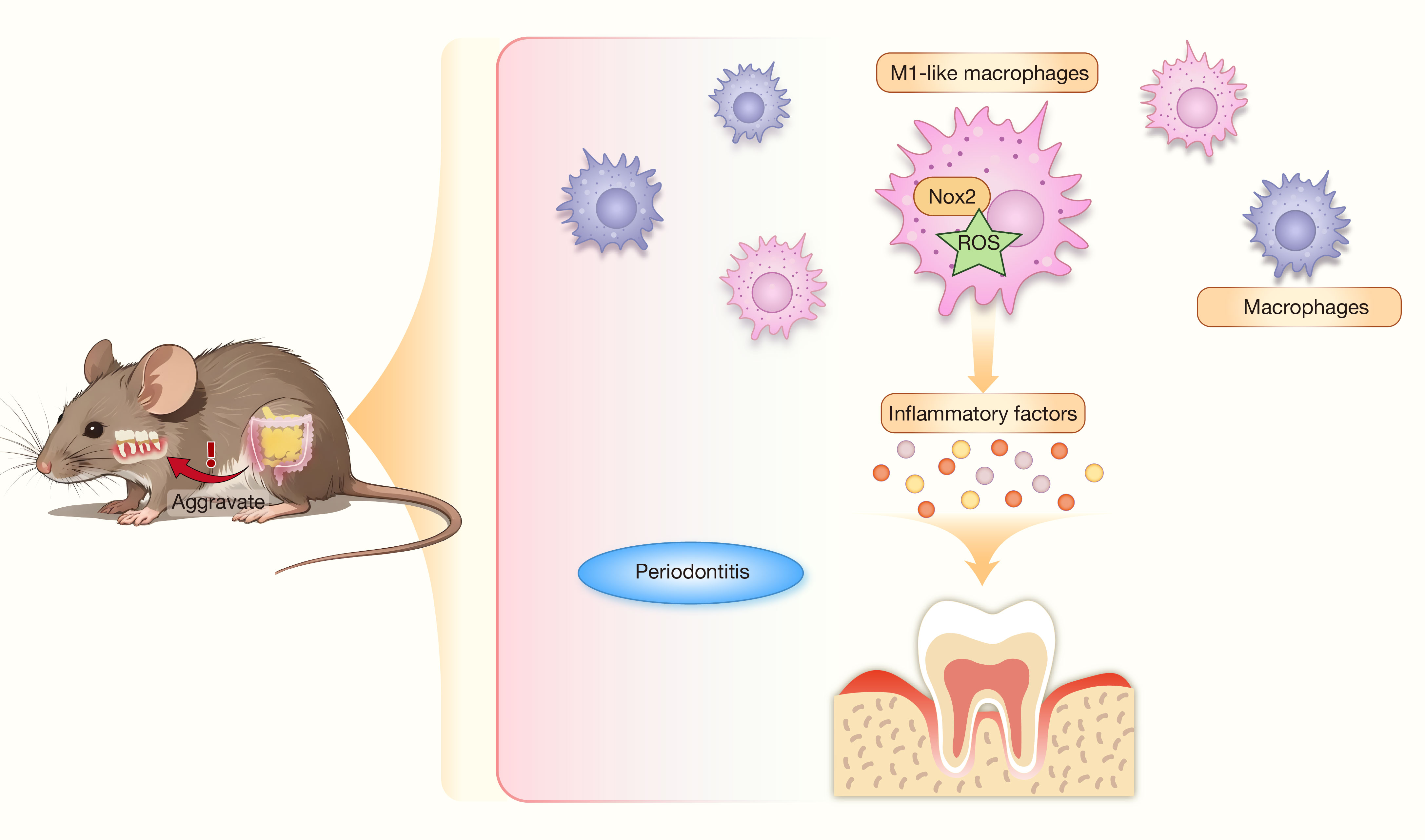
引用:
Xu T, Zhang L, Li M, et al. Dextran sulfate sodium-induced colitis exacerbates periodontitis via the NADPH oxidase 2/reactive oxygen species axis in M1-like macrophages. hLife 2025; 3: 187–200.
期刊简介
hLife由高福院士、董晨院士和Jules A. Hoffmann教授(2011诺奖获得者)领衔,是中国科学院微生物研究所主办,中国生物工程学会,浙江大学陈廷骅大健康学院,西湖大学医学院,上海市免疫治疗创新研究院和广州霍夫曼免疫研究所联合支持,与国际出版商爱思唯尔合作的健康科学领域综合性英文期刊。
hLife聚焦健康科学领域的前沿进展,旨在促进基础研究与临床应用的融合发展。期刊发表与医学相关各研究领域最新成果,学科领域包括(但不限于)病原生物学、流行病学、生理学、免疫学、结构生物学、疾病监测、肿瘤、药物、疫苗和健康政策等。
hLife是一本金色开放获取期刊,月刊出版;2022年成功入选“中国科技期刊卓越行动计划高起点新刊”;2023年11月正式创刊; 2024年5月被DOAJ收录;2024年8月被Scopus收录。
2026年前hLife接收的稿件免收文章处理费(APC)。
期刊网址:
https://www.sciencedirect.com/journ
https://wap.sciencenet.cn/blog-3552961-1488280.html
上一篇:[转载]hLife 报告视频 | 乐率:从耐药菌胆道感染案例透视噬菌体治疗的优势与技术瓶颈
下一篇:[转载]hLife | 上海市东方医院吴文娟团队联合南京鼓楼医院沈瀚团队通过微生物组学揭示了无绿藻皮肤感染过程中的菌群变化特征
